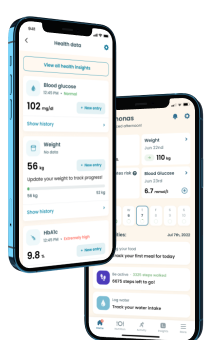Average Doctor Visits Per Year For Person With Diabetes

If you are somebody who lives with diabetes, then it’s most likely you are well aware of the amount of medical care that such chronic conditions can require in order to keep on top of them and prevent them from worsening at a dangerously fast rate.
Diabetes care, for those who are on the lower end of the severity spectrum, can be quite simple and end up being easy and minimal after all of the initial prescription medications have been provided and the right lifestyle changes have been adopted.
Any kind of long running health concern is something that is going to need multiple physician office visits per year. Health statistics suggest that diabetes is on the rise across the country with the largest percentage increase in some time so the American Diabetes Association predicts that more and more of us will have to account for the economic costs of diabetes care in our futures.
For younger patients and older patients alike, regular contact with a medical professional is one of the most important things that you can do in order to protect your health and improve it in the places where that is possible. If you have only just been diagnosed with this chronic condition and have yet to fully wrap your head around having to attend regular appointments with office-based physicians, then allow us to enlighten you as to the whole process.
It is perfectly normal to be nervous about physician office visits and diabetes costs, but even if it is your only health concern, the medical expenditures are essential for preserving and lengthening your life.
With all of this in mind, here are some answers to the most basic and common questions asked regarding doctor visit expectations, rates and diabetes care and prevention.
How Often Should I Visit My Doctor?
The first thing to understand is that your visits to your doctor will most likely be determined by what type of diabetes you have. According to the ADA (American Diabetes Association), people with Type 1 diabetes who take regular insulin shots should be committed to paying a visit to their primary care physician at least once every 3 to 4 months. For those who don’t have to take insulin but instead take pills or other prescription medications, that time can be extended a little to one every 4 to 6 months.
If you have been diagnosed with Type 2 diabetes that is related to things like your weight and overall unhealthy lifestyle, then you might be encouraged to make multiple trips to your doctor on a much more regular basis than once or twice a year.
Untreated and unchecked type 2 diabetes can lead to much more serious health issues such as
- nerve damage
- heart disease
- chronic obstructive pulmonary disease
- cardiovascular disease
- dangerous blood pressure
- eye disease
- cancer
- various other types of diseases and complications.
In these circumstances, patients with diabetes that are at risk of further complications should let a doctor keep a close eye on them. Patients with diabetes Type II, may even require visits as regularly as every month.
What Should I Request At My Appointment?
Unlike other chronic conditions, diabetes follows a fairly similar path regardless of patient age although the oldest patients may experience more severe symptoms and risks of complications.
Before you start making multiple trips to office-based physicians, you should make sure that your concerns about your condition are fully addressed. might want to make sure that you



A National Diabetes Statistics report suggests the following should form part of your diabetes consultation:
Dilated Eye Exam
Did you know that diabetes increases the risk of eye problems? Especially in older age groups, the prospect of things like diabetic retinopathy, glaucoma and cataracts are all very real. Many patients with diabetes like to visit their eye doctor regularly to ensure that their multiple chronic conditions are not having a negative impact on their eyesight.
Blood Pressure Check
Diabetes affects not only your blood sugar, but also your blood pressure. This is something that you can record at home, but office-based physician visits are always going to be more accurate. Stopping a bad blood pressure change in its tracks can help to save you from things like heart disease and stroke.
Screenings For Additional Complications And Additional Chronic Conditions
Unfortunately, for patients with diabetes, it isn’t often their only chronic condition – there are other disease complications. For general purposes of disease control and to make sure you don’t become part of the negative health statistics, you should treat office-based physician visits as a way to test for all of those problems that are exacerbated by or related to diabetes. These include cholesterol levels, nerve damage, poor circulation, and kidney disease. Once you’re at the doctor’s, take a chance to get a thorough checkup – it won’t do any harm.
Discuss Everything With Your Doctor To Try To Achieve Peace Of Mind
Patients with diabetes will often have a lot of anxiety surrounding their condition, especially those of an advancing age. A data brief suggests that patients with the lowest visit rate to their physician are likely to have more mental health problems compared to those with the highest visit rate.
Researchers believe that this is down to the fact that healthcare professionals are able to provide face to face comfort for patients with diabetes, listening to their worries and giving the necessary help. Some of this is going to be due to medications prescribed which may be five or more drugs, but it is also about simply being present to listen, provide information and support for everything from the risk of complications to the economic burden as well as offering general mental comfort and support.
What About the Cost of Diabetes?
The costs of the management of your diabetes is going to be individual. It will initially depend on whether you have Type I or Type II diabetes. Type II is mostly about management within your lifestyle but for Type I costs will depend on
- number of office-based physician visits per year
- your physician’s visit rates for consultations and tests such as screenings
- how much insulin you need
You can expect the annual cost to be in excess of $17,000 per annum. On average, diabetics have medical expenditures approximately 2.3 times higher than what expenditures would be if they didn’t have the condition.
More than 50 per cent of health programs for diabetes are government-funded but many diabetic patients have private medical insurance.
The costs of diabetes treatments are something that can be very concerning to patients with diabetes. Your doctor should be able to provide a good indication of what your expenses are likely to be.
How Can My Doctor Help Me?
If it hasn’t already been made clear by everything we have said above, it is the job of your doctor to help with every single aspect of your diabetes. This obviously starts with diagnosis and medication of the diabetes itself, but your physician should also be prepared to manage any complications of your condition as well as tracking and monitoring your health to identify and manage risks.
The best piece of advice we can give to all age groups of patients with diabetes is that good medical care is the best way you are going to be able to manage your condition. With the right health care, the right medications, and the right control over your health statistics, you are giving yourself the best possible chance of living a long and healthy live.
Thanks to the good work of diabetes doctors and resources like the American Diabetes Association, national vital statistics reports and new research, patients with diabetes no longer have to feel the sense of a ticking clock on their futures. If you keep up your regular office-based physician visits, stick to your medication and any other regime, there is no reason that you won’t be able to live to a full and ripe age with your diabetes under control.
Take a quiz and get your diabetes-management plan today!









